A small island, but one of great historical importance, Sri Lanka is finally getting the attention it deserves as a travellers paradise. Formally known as Ceylon, Sri Lanka was colonised by the Dutch, Portuguese and British, and due to its close proximity it also has elements of Indian culture. The varied cuisine and copious amounts of tea reflect its past, while it’s abundance of natural wildlife and beaches highlight the beautiful future it needs to protect. Safaris in national parks Yala and Udawalawe host a range of Asian delights including elephants, buffalo and if you are lucky, the infamous leopard. Tour a tea plantation and sample some of the world famous tea while overlooking the mountains.
Walking around Colombo you will stumble upon historical spots, colonial architecture, temples and friendly faces of all religions. If you time it right you might even find yourself in the middle of a festival! If you’ve had too much roti and curry then make the pilgrimage up to Adams peak - the perfect place for watching sunrise.
Being an island, Sri Lanka is circled by golden sands and a steady stream of waves perfect for surfing, snorkeling or kitesurfing. Take a boat out for a spot of fishing, whale or dolphin watching, or head inland for some thrilling white water rafting. Sri Lanka may be small but it has so much to offer the adventurous traveller.
While Sri Lanka has distinct wet and dry seasons, it also has 2 yearly monsoons which make it a bit complicated to choose the best time to visit. The island’s southwest is dry from December to March, but experiences a monsoon from May to August. In contrast, the northeast (which as a whole is comparatively drier) is dry from May to September and rainy from October to January. October and November are wild cards, where rain can occur throughout the island. This map can also help you determine when to embark on your vacation! Luckily, it is not so complicated temperature-wise. Coastal regions stay at a balmy 27°C/80°F year-round, while higher elevations can dip to average temperatures of 20°C/80°F (Kandy) or 16°C/61°F (Nuwara Eliya).
Monsoon Season
May — July (south-west)
October — January (north-east)
Average temperature
87–78 °F
30–25 °C
Average number of rainy days 12-17
Beach Season
January — April (south)
May — July (east)
Average temperature
88–73 °F
31–23 °C
Average number of rainy days 4—8
Average temperature
Average number of rainy days
The following links are affiliate links to Amazon.com or other local Amazon web stores - it depends on your location. The listed prices of all items are the US Amazon store prices at the time of publishing. If you are visiting us from outside the USA and there is an analogous item in your local Amazon web store, you'll be redirected there automatically. We do our best to keep all prices and descriptions up to date, but if you find any errors or inaccuracies, don't hesitate to contact us using our feedback page!
Recommended Travel Guides2
City walking10 items
Sri Lanka is an amazing country! Despite the fact that it is relatively small, the country has so much to offer for even the sophisticated or picky traveller. Besides amazing activities like going to the beach, surfing, going on safaris, whale watching and cultural exploring, you will most likely spend a few days in big cities like Colombo and Galle or smaller towns like Kandy (the last capital of the ancient kings' era of Sri Lanka) and Nuwara Eliya (“Little England”).
Colombo, as the capital, and Galle, a former fort city (and Unesco World Heritage Site), will give you the unique chance to explore Dutch-colonial architecture, enjoy beautiful museums and gardens, jump into crazy, traffic-filled streets and maybe get lost a bit among countless rows of spices and local crafts in the market, try incredibly delicious exotic dishes and, finally, end up at the quay (seafront) for a gorgeous sunset!
-
Good daypack
-
Sunglasses
-
Face sunblock
-
Body sunblock
-
Hats
-
Camera (portraits and city views)
-
Portable battery charger (for your phone and camera)
-
Facial cleansing wipes
-
Hand wipes
-
Travel umbrella
Beaching10 items
Sri Lanka is famous for its long, wild and astonishingly beautiful beaches! You can simply chill out at the beach and enjoy the view, but if you want to swim, it can be a bit tricky. Most of the beaches have big waves, and some of them are truly gigantic! For example, the beach in Tangalla has one of the most spectacular views I’ve ever seen. To swim there, however, we had to meet up with a local man (we lived in his guesthouse) who showed us how to get over the wavepoint and reach the so called quiet zone before the places where the waves form. However, even in the Tangalla area you can enjoy a small bay, Goyamboka, with a very quiet beach. Another beautiful beach with a quiet sealine is located in Mirissa, a small town where you can try surfing and go whale watching. Anyway, Sri Lanka has a really scorching sun, so be prepared to protect your skin from sun burns! This is especially necessary if you are planning to spend time enjoying some beach activities.
-
Body sunblock
-
Face sunblock
-
Sun oil
-
After sun care
-
Moisturizing spray
-
Sunglasses
-
Hats
-
Portable shade for the beach
This thing is extremely important, as you cannot always find natural shade on islands.
-
Hand wipes
-
UV protection shirts
 O'Neill UV Sun Protection Men's Basic Skins Long Sleeve Crew Rashguard$24.14
O'Neill UV Sun Protection Men's Basic Skins Long Sleeve Crew Rashguard$24.14 O'Neill UV Sun Protection Men's Basic Skins Tee Rashguard$24.95
O'Neill UV Sun Protection Men's Basic Skins Tee Rashguard$24.95 O'Neill UV Sun Protection Women's Basic Skins Long-Sleeve Rashguard Top$17.96
O'Neill UV Sun Protection Women's Basic Skins Long-Sleeve Rashguard Top$17.96 O'Neill UV Sun Protection Women's Basic Skins Short-Sleeve Crew Rashguard Top$17.99
O'Neill UV Sun Protection Women's Basic Skins Short-Sleeve Crew Rashguard Top$17.99 Speedo Kid's UV Long Sleeve Sun Shirt$18.95
Speedo Kid's UV Long Sleeve Sun Shirt$18.95
Surfing10 items
Sri Lanka is probably one of the best places in the world to learn to surf. It has long and wide beaches, so there are plenty of different types of waves - ranging from small ones for beginners to huge ones for advanced surfers. If you simply want to try surfing, you might need a few days. Mirissa has a great opportunity to learn this sport. Right at the beach you can find a surf instructor and within next few hours you will be standing on the board! Then, you only need to practice staying on the board longer than a few seconds. To make your life as a surfer easier you might need some items.
-
UV protection shirts
 O'Neill UV Sun Protection Men's Basic Skins Long Sleeve Crew Rashguard$24.14
O'Neill UV Sun Protection Men's Basic Skins Long Sleeve Crew Rashguard$24.14 O'Neill UV Sun Protection Men's Basic Skins Tee Rashguard$24.95
O'Neill UV Sun Protection Men's Basic Skins Tee Rashguard$24.95 O'Neill UV Sun Protection Women's Basic Skins Long-Sleeve Rashguard Top$17.96
O'Neill UV Sun Protection Women's Basic Skins Long-Sleeve Rashguard Top$17.96 O'Neill UV Sun Protection Women's Basic Skins Short-Sleeve Crew Rashguard Top$17.99
O'Neill UV Sun Protection Women's Basic Skins Short-Sleeve Crew Rashguard Top$17.99 -
Face sunblock
-
Body sunblock
-
Waterproof bandage
-
Antiseptic wipes (if you have some small wounds, scratches)
-
Universal injury relief ointment
-
After sun care
-
Quadcopter with camera
-
GoPro camera
-
Quadcopter for GoPro
Safari11 items
Though it is a relatively small country, Sri Lanka has 22 national parks! If you enjoy watching wild animals among truly pristine landscapes, you should definitely visit at least one of them. The biggest and most popular ones are Yala and Udawalawe national parks. If you’re keen on bird-watching, you shouldn't miss Bundala national park. To visit a park you need either half of the day (early morning or afternoon, as during the heat of the day animals prefer to hide in the shadow) or a full day. For example, in Yala you can book a 12-hour tour starting at 6 am and going until 6 pm. This is quite exhausting, but definitely worth it!
The vehicle you’ll be provided is a typical open (without doors but with a top) safari jeep which means that all the dust from the roads and all the sun rays will find their way to you. Most likely, you’ll be provided with some meals by your safari operator, but there are a few items we recommend having with you to make your safari more comfortable!
-
Motion sickness pills
The roads are very bumpy so you may end up with a little bit of motion sickness. Don’t take pills, as they will make you sleepy. It’s better to use a lighter alternative like gummies or drops.
-
Emesis bags
-
Earloop mask
-
Face sunblock
-
Body sunblock
-
Sunglasses
-
Facial cleansing wipes
-
Hand wipes
-
Good binocular
Usually, all safari operators provide some binoculars, but only one for the whole car and the quality is not sufficient. Thus, it really makes sense to bring your own.
-
High DEET insect repellent
-
Camera and zoom
This is not a simple question. If photography (especially of wildlife) is or is going to be one of your passions, then you need to invest in a good camera with a good zoom. After searching and investigating a lot about what camera and lens are the best for shooting wildlife on a safari, I finally bought Canon Zoom EF 100-400 mm f/4.5-5.6L IS II, as it allows you not only shoot nice landscapes, but has a good quality of shooting at a distance. Most of the animals will not be posing in front of you; they are shy and will most likely stay far away. Plus, in countries where you need your zoom the most, the weather and light conditions are very tricky. Direct sun rays (savannah) or high humidity (rainforest) are not the easiest issues to handle when shooting. That’s why you need a zoom with a good aperture. Another Canon option I personally considered was zoom EF 70-200 mm f/2.8L IS II USM, as it has better aperture than 100-400, but the zoom is weaker for animals that are too far away. So in short, it’s a very personal question what camera and zoom you should bring on safari. I would rather say if shooting animals is not your main goal, it’s better invest more money in good binoculars and enjoy them in real life.
Whale watching7 items
In Sri Lanka you have a great chance to see amazing whales, however this is only possible in Mirissa. Usually, the hotel you stay at can offer you tickets. Alternatively, you can go directly to the pier and organise it on your own right there, which might be a bit cheaper. The tour starts early in the morning. The boat is a typical fisherman’s boat, so be prepared for real motion sickness, even if you’re pretty good at sea. Having a proper breakfast beforehand will make you feel much better on the boat, though it also makes sense to grab some snacks and bring water with you. And don’t forget about that brutal sun! On the ship there will be some shade, but it won’t be enough and sometimes it will move in such a way that you’ll end up being right in the sun, so sunblock is extremely important if you don’t want to get burnt.
-
Motion sickness pills
-
Emesis bags
-
Face sunblock
-
Body sunblock
-
Sunglasses
-
Hand wipes
-
Good binocular
Mount hiking11 items
Sri Lanka has many hills covered with tea plantations, which makes it very a picturesque place for taking photos and walking around enjoying the scenic views. If you want to challenge yourself a little bit, you should try to hike Adam’s Peak (Sri Pada, 2243 m) or Sigiriya (200 m high rock).
Hiking Adam’s Peak will be an unforgettable experience, not only because it will test your physical endurance but also because you can meet many interesting local people. This mountain is basically a rock that is believed to be the footprint of Buddha by Buddhists, Shiva by Hindus and Adam by Muslims and Christians. Hundreds of local people come from every part of Sri Lanka to visit the sacred Sri Pada and climb it barefoot each year. Old and young, they also carry their kids on their backs. When they reach the top by sunrise, they sing. It’s an amazing experience to follow this crowd and find yourself singing along with them under a sky filled with brilliant stars! You should start climbing at about 2 am to see sunrise on the peak by 6 am. On top there is a small platform where you must take off your shoes, otherwise it’s disrespectful and the police - yes, there is a policeman there - will call you out and make you shed your shoes.
Sigiriya is another beautiful spot you shouldn’t miss visiting Sri Lanka. It’s a rock formation consisting of 1200 steps, about 200 meters. Not only does it have a very interesting historical and cultural significance, but it is a great opportunity to admire unique Sri Lankan-style frescoes.
Another fascinating hiking experience is possible in the neighborhood of Nuwara Eliya, “Little England”, in Hortons Plains National Park. Surrounded by various tea plantations and waterfalls, it offers remarkable Sri Lankan landscapes you won’t want to miss. To make hiking easier, I would suggest bringing a few items along with you.
-
Good daypack
-
Light hiking boots
-
Thick socks
It’s a must if you hike Adam’s peak, as you’re not allowed to stay on top with your shoes on. There is a concrete floor at the top, plus it’s pretty chilly during the night. With socks it will be much easier. And don’t leave your shoes outside; keep them in your backpack.
-
Torch and headlamp
-
Extra torch batteries
-
High DEET insect repellent
-
Camera (portraits, landscapes)
-
Tripod
-
Rain poncho
-
Face sunblock
-
Body sunblock
Vaccination6 items
Make sure you are up-to-date on routine vaccines before every trip. These vaccines include the measles-mumps-rubella (MMR) vaccine, diphtheria-tetanus-pertussis vaccine, varicella (chickenpox) vaccine, polio vaccine, and your yearly flu shot. The following vaccination recommendations are taken from the Centers for Disease Control and Prevention (CDC) webpage.
Hepatitis A
Typhoid
Hepatitis B
Japanese Encephalitis
Rabies
Yellow fever
First Aid Kit6 items
Of course, Sri Lanka is a country where you can have some qualified help. However, in some remote areas it will take a while to get proper treatment. Sometimes, not you but some of your traveling buddies might need help. Make sure you have something in advance against the following symptoms:
Wounds, traumas, cuts
Gastro problems like poisoning or heartburn
Allergic reactions on sun burn, bites of insects, unusual food
Fever and cold
Motion sickness
Strong painkillers
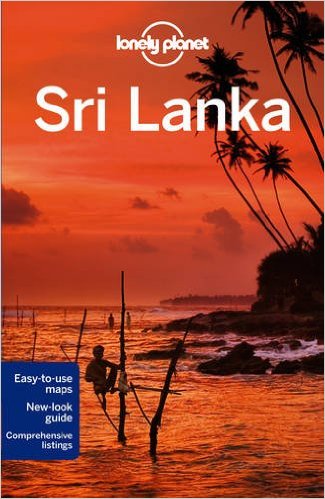
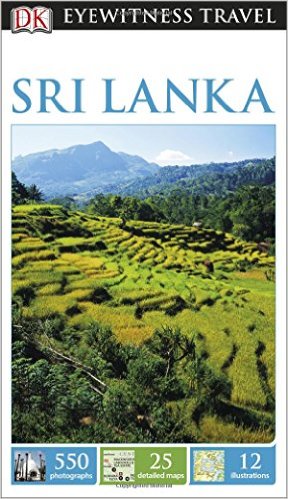
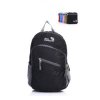


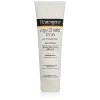
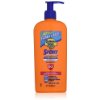


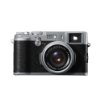

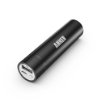



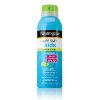
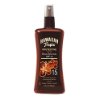
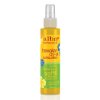
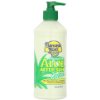
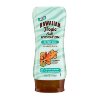
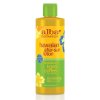
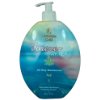
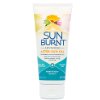


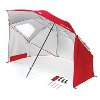
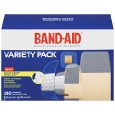
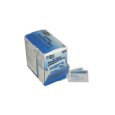

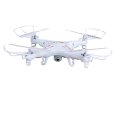
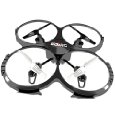
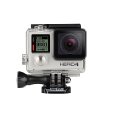
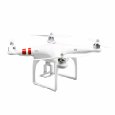
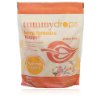


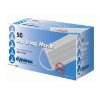
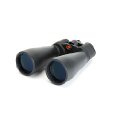

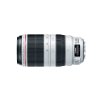
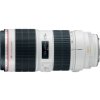


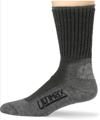




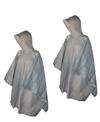
Like this packing list
Like VacayKit